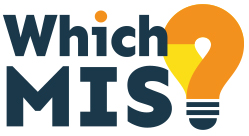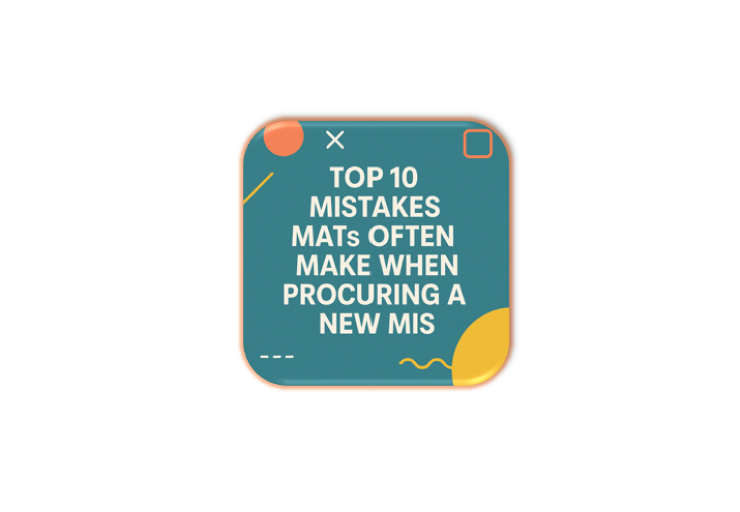In May last year, we published a guide to MIS procurement for schools and MATs.
Since then, we’ve supported numerous trusts through the procurement process, helping them secure the right system for their needs.
We’ve also spoken to many schools and MATs to offer free advice and shared our key considerations when thinking about changing your MIS.
Currently, the primary driver for change is licence renewal, particularly the expiry of three year SIMS licences, which now require a minimum three-year renewal.
This is prompting many schools and MATs to re-evaluate their options.
The Department for Education also advises schools and trusts to regularly review their Management Information Systems to ensure they are fit for purpose. Reviews should cover commercial value, data accuracy, and overall effectiveness.
Here are the ten most common mistakes MATs make during the MIS procurement process—and how to avoid them.
- “We’ve Got Plenty of Time”
Whether you’re a single school or a large MAT, the procurement process nearly always takes longer than expected.
Start by working backwards from your licence expiry date.
For example, if your licence expires in March 2026 and your provider requires three months’ notice, you’ll need to give notice by 31 December 2025. This means ensuring notice is given and confirmed before the end of the Autumn term.
Key steps to take before then:
- Conduct market testing
- Identify key stakeholders
- Shortlist potential suppliers
- Write and publish a specification
- Choose a procurement route (DfE recommends using frameworks)
- Arrange product demos (with scoring criteria if necessary)
- Review responses and score suppliers
- Compile a list of all 3rd party product and audit third-party integrations
- Investigate data migration and installation timelines
- Award the contract through your chosen framework
- Schedule stakeholder training
- Monitor engagement from the MIS provider
- Ensure implementation is managed for at least six months post-go live
2. Treating It Like a Purchase—Not a Project
Implementing a new MIS is a complex change management project, not just a procurement exercise.
Your plan should address:
- Change readiness
- Stakeholder engagement
- Implementation timelines
- Technical integration
- Staff training and support
Finally, be aware of your procurement policy and financial thresholds. Under the new Procurement Act, the threshold for supplier and service contracts is £214,904—including four years of costs, VAT, training, and support.
As a very rough guide unless you’re a MAT with fewer than 4,000 pupils, you’re likely above this threshold — and should procure via a compliant framework. Direct awards are not recommended.
3. Not Engaging Stakeholders
MIS changes affect a wide range of users — from administrators to teachers, senior leaders to parents.
If key stakeholders are left out of the process, you risk backlash and low adoption. Involving them early ensures buy-in and often turns vocal critics into champions of the new system.
4. Underestimating the ‘Pain of Change’
Switching systems is not just a technical process, it’s a human one. The disruption to routines and processes is significant.
Plan early and provide role-based training. Many providers now offer bite-sized, on-demand resources supported by help guides and contextual tips. Still, don’t underestimate the need for hands-on training, especially for parents and students, if parent engagement tools are part of the change.
5. “We’ll Just Go with What Other Schools Use”
While schools often value peer recommendations, no two schools or trusts are exactly alike. A solution that works well for one MAT may not suit another with different structures, processes, or strategic goals.
6. Choosing the Biggest
We’ve heard MAT leaders say they chose their MIS based on which provider had the largest market share.
The assumption is that what works for most must be the safest option.
This may have been true when SIMS dominated the market with an 87% share, but times have changed. Currently schools in England can have a choice of 19 MIS platforms — each with unique strengths and design approaches.
7. “They’re All the Same”
It’s a common misconception that all MIS platforms offer the same functionality. While all mainstream systems comply with statutory requirements, like school census support, attendance monitoring, and Ofsted compliance, there are still major differences.
Some are geared towards secondary schools, others towards primary. Some offer comprehensive all-in-one platforms, while others excel at multi-school data analysis. It’s important to evaluate based on your specific needs.
8. “We’ll Go with the Cheapest” (Or: Placing Too Much Weight on Cost)
Value for money matters — but going with the lowest bidder doesn’t always deliver the best outcome.
In some cases, providers undercut pricing to win business, especially when cost is weighted heavily in evaluations. The danger here is choosing a system that looks cheap upfront but lacks essential functionality, requiring expensive add-ons and increasing long-term costs.
9. “We’ll Just Stick with What We Have”
This is a valid option in some cases, especially if staff are familiar with the existing system. However, it’s important to remember that if you’re using SIMS, you’ll soon be transitioning to SIMS Next Gen, which is a system change in itself.
Moreover, DfE guidance encourages regular reviews to ensure systems remain fit for purpose and cost-effective.
10. Choosing Based on a Sales Demo
Sales demos are, by nature, designed to impress. Providers highlight their strengths and gloss over shortcomings.
To avoid being swayed by a polished pitch, insist that suppliers demonstrate the features listed in your specification. Don’t accept vague assurances — ask to see the functionality in action.
A useful mantra is “Don’t tell me—show me.”
Here at WhichMIS we are happy to offer free advice on anything to do with MIS procurement. Feel free to book a call with Steve for a free advice session here.

